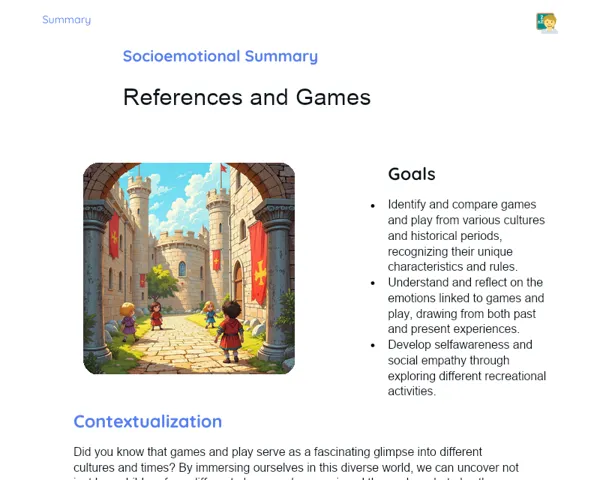Summary Tradisional | Asia: Socialism
Contextualization
To grasp why socialism became prominent in Asia during the Cold War, we first need to look at how the Soviet Union shaped global politics at that time. After World War II, the world was split into two ideological camps: the capitalist side spearheaded by the United States, and the socialist bloc under Soviet leadership. Asia's rich cultural and geopolitical diversity turned it into a vital arena for this ideological clash. Nations like China, Vietnam, and North Korea adopted socialist systems, drawing inspiration from the Soviet model, leading to substantial social, political, and economic changes.
The Chinese Revolution of 1949, led by Mao Zedong, stood out as a critical turning point, establishing China as a socialist people's republic and shifting the global balance of power. This success sparked revolutionary fervor in other Asian countries, such as Vietnam and Cambodia, which also embraced socialism. Directly reflecting the Cold War, the Korean War (1950-1953) and the Vietnam War (1955-1975) highlighted the Soviet Union's pivotal role in aiding nations striving for socialist governance. These conflicts and revolutions drastically reshaped Asia's geopolitical landscape and significantly influenced global politics.
To Remember!
Historical Background of Soviet Influence in Asia
Following World War II, the Soviet Union rose as a global powerhouse, competing fiercely with the United States for political and ideological sway across various parts of the world. In Asia, the USSR was eager to propagate its socialist model by backing revolutionary movements and governments that resonated with its ideologies. The Soviet strategy involved providing military, economic, and political aid to strengthen socialist regimes and fortify its ideological front against Western influence.
The bifurcation of the world into two conflicting ideological camps triggered a series of regional confrontations in Asia, where Soviet presence was notably dominant. The USSR exploited its influence to foster the establishment of socialist regimes in countries like China, Vietnam, and North Korea, which became the strongholds of socialism in the region, aiding the spread of Marxist-Leninist ideology across the continent.
Soviet support for these nations extended beyond the military realm, offering economic and technical assistance to help build their infrastructures and grow their economies. This backing proved vital for the endurance and stabilization of socialist regimes in Asia, equipping them to confront both internal and external challenges.
-
The Soviet Union emerged as a global player after World War II.
-
The USSR aimed to spread its socialist model throughout Asia, providing vital support.
-
Soviet influence was instrumental in solidifying socialist regimes in China, Vietnam, and North Korea.
The Chinese Revolution and Mao Zedong
The Chinese Revolution of 1949, headed by Mao Zedong, marked a watershed moment in the history of socialism in Asia. Mao and the Chinese Communist Party mobilized the populace to overthrow the nationalist government of Chiang Kai-shek, establishing the People's Republic of China. This victory radically transformed China into a socialist republic and shifted the global power dynamics during the Cold War.
The newly formed socialist republic in China pursued policies of collectivization and industrialization to modernize the economy and foster self-sufficiency. Mao introduced sweeping reforms, such as land redistribution and nationalization of industries, focused on redressing social inequalities. These policies profoundly affected Chinese society and restructured its economy.
Moreover, the Chinese Revolution served as an inspiration for revolutionary movements in other Asian countries. Mao's success proved that a socialist revolution could succeed even in an agrarian and underdeveloped setting, urging other leaders in Vietnam, Cambodia, and beyond to pursue a similar path. China thus became a benchmark for socialist movements across Asia, broadening socialism's reach in the region.
-
The 1949 Chinese Revolution established the People's Republic of China under Mao Zedong's leadership.
-
Mao's policies of collectivization and industrialization aimed to bring China into the modern era.
-
The Chinese Revolution inspired similar movements in other Asian countries.
Korean War and the Division of the Peninsula
The Korean War (1950-1953) was one of the foremost conflicts of the Cold War and had enduring repercussions for the Korean Peninsula. The war erupted when North Korean troops, aided by the Soviet Union and China, launched an invasion into South Korea. The United States and allied nations intervened to support South Korea, leading to a drawn-out and bloody conflict.
Although the war concluded with an armistice in 1953, no formal peace treaty was signed, leaving the Korean Peninsula divided along the 38th parallel. North Korea solidified a socialist regime under Kim Il-sung, backed strongly by the Soviet Union, while South Korea maintained a capitalist system, with support from the United States.
The split in Korea had profound and lasting implications for the region and global geopolitics. North Korea evolved into an isolated and militarized nation, while South Korea emerged as a significant economic player in East Asia. The tensions between the two Koreas continue to this day, with the peninsula being one of the world’s most unstable hotspots.
-
The Korean War (1950-1953) was a notable conflict during the Cold War.
-
The war resulted in the Korean Peninsula's division into a socialist North Korea and a capitalist South Korea.
-
North Korea received essential military and economic aid from the Soviet Union.
Vietnam War and Socialist Vietnam
The Vietnam War (1955-1975) was one of the most protracted and devastating conflicts of the Cold War, marked by the direct involvement of both Soviet and American powers in Asia. North Vietnam, under the leadership of Ho Chi Minh and supported by the Soviet Union and China, waged war against South Vietnam, which was backed by the United States and other Western nations. This conflict was characterized by extreme violence and severe human losses.
Soviet support was crucial for North Vietnam's success. The USSR provided comprehensive military, economic, and technical aid, enabling North Vietnam to counter the superior American forces. This support encompassed weapons, military training, and financial assistance, essential for bolstering North Vietnam's combat capabilities.
The war culminated in the fall of Saigon in 1975 and the unification of Vietnam under a socialist regime in 1976. North Vietnam's victory not only solidified socialism in Vietnam but also significantly affected global politics, showcasing that socialist movements could overcome even formidable adversaries like the United States. Vietnam's unified socialist regime further reinforced Soviet influence in Asia and inspired revolutionary movements across the continent.
-
The Vietnam War (1955-1975) was a lengthy and catastrophic conflict during the Cold War.
-
The Soviet Union's crucial support was instrumental in securing victory for North Vietnam.
-
The war concluded with Vietnam's unification under a socialist regime in 1976.
Key Terms
-
Cold War: A period of geopolitical tension between the United States and the Soviet Union following World War II.
-
Soviet Union: A socialist superpower that encouraged various nations to adopt socialist governments.
-
Socialism: A political and economic framework where the means of production are collectively owned and regulated by the state.
-
Chinese Revolution: The movement led by Mao Zedong that transformed China into a socialist people's republic in 1949.
-
Mao Zedong: The Chinese communist leader who spearheaded the Chinese Revolution and founded the People's Republic of China.
-
Korean War: A conflict between North and South Korea (1950-1953) that resulted in their separation.
-
North Korea: A socialist state formed after the Korean War, heavily supported by the Soviet Union.
-
South Korea: A capitalist state established post-Korean War, backed by the United States.
-
Vietnam War: The conflict between socialist North Vietnam and capitalist South Vietnam (1955-1975), which ended with Vietnam's socialist unification.
-
Socialist Vietnam: The unified country under a socialist government following the North's victory in the Vietnam War.
Important Conclusions
In this lesson, we examined the Soviet Union's influence in Asia during the Cold War, focusing on how the USSR endeavoured to expand its socialist model in Asian nations. The 1949 Chinese Revolution, led by Mao Zedong, was pivotal in changing China into a socialist people's republic and served as a source of inspiration for other revolutionary activities in the region.
We discussed the Korean War (1950-1953), which divided the Korean Peninsula into two opposing nations: North Korea, a socialist state backed by the Soviet Union, and South Korea, supported by the United States. The Vietnam War (1955-1975) was another major conflict, where Soviet aid was vital for North Vietnam's socialist regime to emerge following the war's conclusion and Vietnam's unification in 1976.
Studying these historical events is key to comprehending today's geopolitics and international relations. The insights gained about the rise of socialist regimes in Asia and the Soviet Union’s role lay a solid groundwork for understanding contemporary conflicts and the influence of ideologies on governance.
Study Tips
-
Review key events and dates from the lesson, like the Chinese Revolution of 1949, the Korean War (1950-1953), and the Vietnam War (1955-1975).
-
Delve into supplementary readings regarding the Soviet Union's impact on Asia during the Cold War, especially regarding military and economic assistance.
-
Watch documentaries and educational videos on the Cold War and related socialist movements in Asia for a clearer grasp of events and their repercussions.



